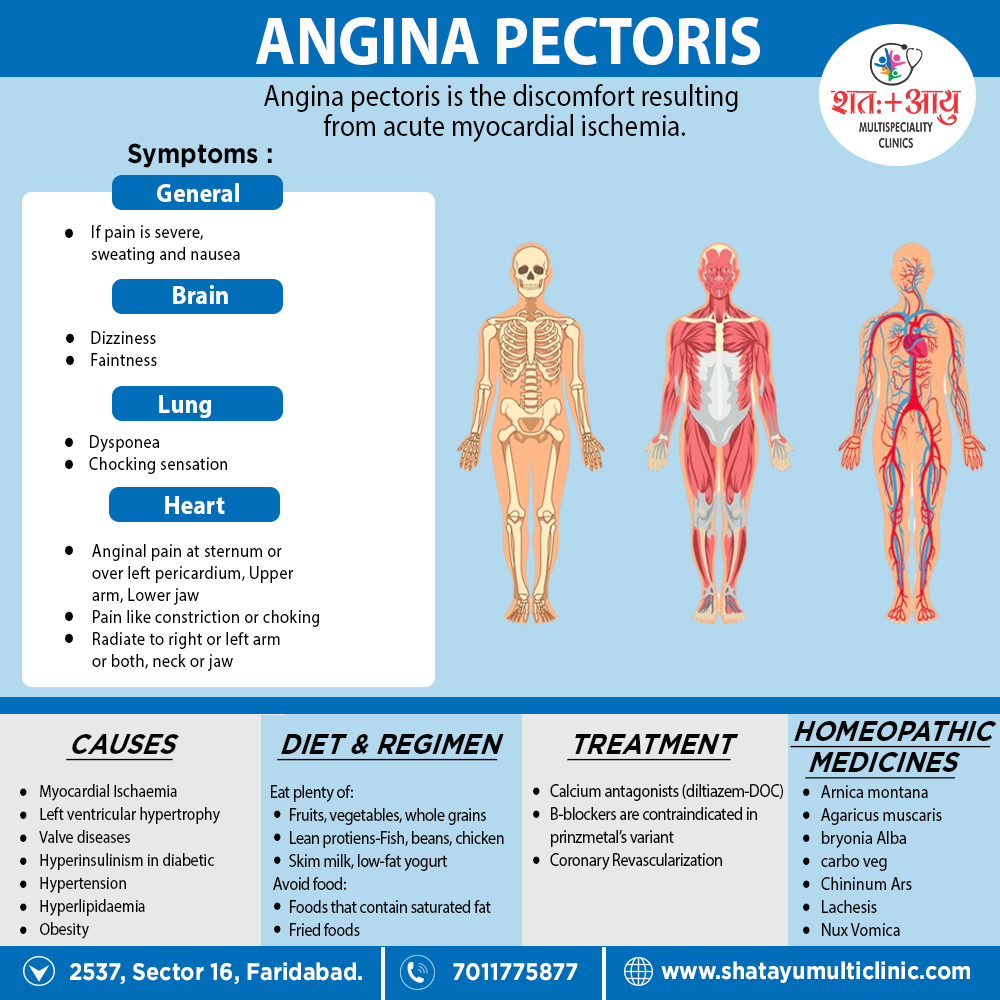Overview of Angina Pectoris
- Initially, Coronary atheroma is by far the most common cause of angina, although the symptom may be a manifestation of other forms of heart disease, particularly aortic valve disease and hypertrophic cardiomyopathy. [5]

Angina pectoris is the discomfort resulting from acute myocardial ischemia. [1]
Factors influencing myocardial oxygen supply and demand.
Acute myocardial ischemia occurs when myocardial oxygen demand exceeds supply
Symptoms:
Coronary Revascularization i.e.:
Acute attack – Glyceryl trinitrate 0.6 mg or isosorbide dinitrate 5 mg sublingually, or nitrite spray in a measured dose of 0.4 mg. Moreover, Effect starts in 3 to 5 minutes and its action lasts for 20 to 40 minutes. Contraindicated in patients with glaucoma.[1]
Lifestyle changes are also important in preventing heart disease and angina. These include:
Homeopathy treats the person as a whole. It means that homeopathic treatment focuses on the patient as a person, as well as his pathological condition. In addition, The homeopathic medicines selected after a full individualizing examination and case-analysis.
A miasmatic tendency (predisposition/susceptibility) also often taken into account for the treatment of chronic conditions.
A homeopathy doctor tries to treat more than just the presenting symptoms. The focus is usually on what caused the disease condition? Why ‘this patient’ is sick ‘this way’?.
The disease diagnosis is important but in homeopathy, the cause of disease not just probed to the level of bacteria and viruses. Other factors like mental, emotional and physical stress that could predispose a person to illness also looked for. No a days, even modern medicine also considers a large number of diseases as psychosomatic. The correct homeopathy remedy tries to correct this disease predisposition.
The focus is not on curing the disease but to cure the person who is sick, to restore the health. If a disease pathology not very advanced, homeopathy remedies do give a hope for cure but even in incurable cases, the quality of life can greatly improved with homeopathic medicines.
The homeopathic remedies (medicines) given below indicate the therapeutic affinity but this is not a complete and definite guide to the homeopathy treatment of this condition. The symptoms listed against each homeopathic remedy may not be directly related to this disease because in homeopathy general symptoms and constitutional indications also taken into account for selecting a remedy, potency and repetition of dose by Homeopathic doctor.
So, here we describe homeopathic medicine only for reference and education purpose. Do not take medicines without consulting registered homeopathic doctor (BHMS or M.D. Homeopath).
Angina pectoris is the discomfort resulting from acute myocardial ischemia.